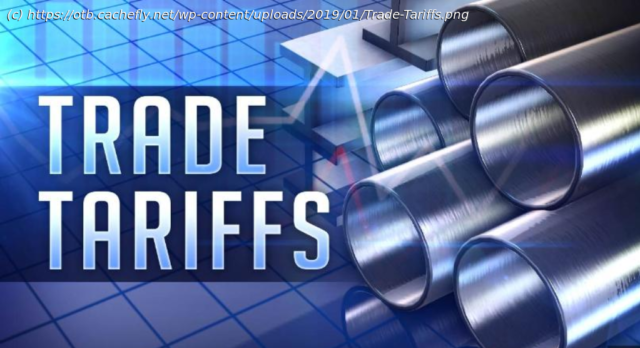Despite the President’s claims, the American steel industry isn’t doing well at all.
President Trump is claiming that his recent tariff policies have led to a revival of the American steel industry, but the opposite appears to be the truth:
WASHINGTON — President Trump has latched on to the idea of using steel to build his wall along the southern border, praising himself for fulfilling two campaign promises at once: keeping out illegal immigrants and resuscitating a struggling industry.
“They were doing very poorly when I took office, and now they’re doing very well,” Mr. Trump said of American steel makers before boarding Marine One this month. “Our steel industry was dying, and now it’s very vibrant.”
But in the 10 months since the Trump administration imposed 25 percent tariffs on steel imports, prices in the United States have now fallen back to levels last seen before the tariffs were announced on March 1.
Hiring in the steel sector remains stagnant, in part because new mills have become more reliant on automation. Even with the opening and restarting of several mills last year, direct steel industry employment was 146,300 as of November — 4 percent lower than it was four years ago, according to the American Iron and Steel Institute. Industry analysts estimate that steel companies made 50 announcements of plans for new mills and investments last year and that three dozen plants were built or restarted.
Investors are increasingly wary about the industry’s long-term strength. Stock prices for some of the nation’s biggest steel manufacturers dropped by as much as 47 percent in 2018 amid fears of slowing global economic growth and the potential for Mr. Trump to reach trade deals that remove the tariffs.
“We fully expect the players in the steel supply chain to have weaker years in 2019,” said Philip Gibbs, a metals analyst at KeyBanc in Ohio.
The Trump administration imposed sweeping steel and aluminum tariffs on trading partners like Europe, Canada, Japan and Mexico, saying it was trying to protect American security by preventing a flood of cheap metals into the United States. The tariffs, which went fully into effect in June, initially goosed steel prices in the United States, which jumped more than 50 percent after it became clear that the tariffs would really be put in place.
Mr. Trump has routinely pointed to the rising prices as a boon to American steel companies. But the price spike ultimately hurt demand as industries that rely on the metal, like automakers and homebuilders, struggled to absorb the rising costs or passed them on to customers.
Caterpillar, the farm equipment manufacturer, said last year that it would face $200 million in additional costs because of the steel tariffs. General Motors slashed its profits forecast for 2018 because of higher steel costs. Many businesses chose alternative materials or delayed investments, putting pressure on steel prices, which have since fallen.
According to S&P Global Platts, prices for American-made hot-rolled coil steel, the industry benchmark, jumped 41 percent in the first half of 2018 and then fell about 21 percent from that peak in the second half of the year. That trend is likely to continue this year.
“Steel prices remain under pressure to begin 2019,” said Michael Fitzgerald, a metals pricing specialist at S&P Global Platts. “Typical seasonal improvements following the slower holiday period are yet to take hold as domestic steel buyers no longer fear a supply crunch.






